Terms Pertaining to the Body as a Whole
0.0(0)
0.0(0)
New
Card Sorting
1/112
Earn XP
Description and Tags
Study Analytics
Name | Mastery | Learn | Test | Matching | Spaced |
|---|
No study sessions yet.
113 Terms
1
New cards
Digestive system
mouth, pharynx (throat), esophagus, stomach, intestines (small and large), liver, gallbladder, pancreas
2
New cards
Urinary or excretory system
kidneys, ureters, urinary bladder, urethra
3
New cards
Cells—The fundamental unit of all living things
Major parts of a cell include:
Chromosomes
Nucleus
Cell membrane
Cytoplasm
Mitochondria
Endoplasmic reticulum
Major parts of a cell include:
Chromosomes
Nucleus
Cell membrane
Cytoplasm
Mitochondria
Endoplasmic reticulum

4
New cards
Body cavities are the spaces within the body that contain internal organs (viscera).

5
New cards
Organs of the
Abdominopelvic and Thoracic Cavities
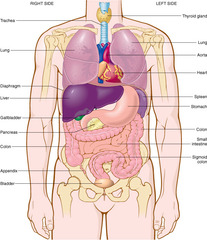
6
New cards
Abdominopelvic Regions
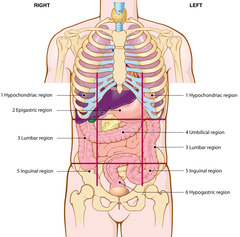
7
New cards
Abdominopelvic Quadrants
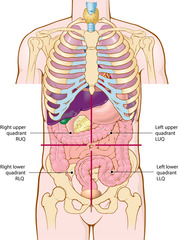
8
New cards
Anatomical Divisions of the Back
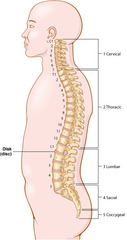
9
New cards
Positional and Directional Terms
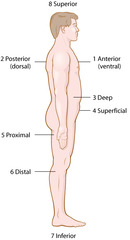
10
New cards
Planes of the Body
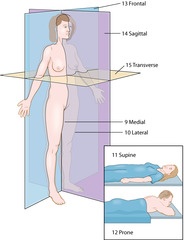
11
New cards
abdmin/o
abdomen
12
New cards
adip/o
fat
13
New cards
anter/o
front
14
New cards
bol/o
the cast (throw)
15
New cards
cervic/o
neck (of the body or of the uterus)
16
New cards
chondr/o
cartilage (type of connective tissue)
17
New cards
chrom/o
color
18
New cards
coccyg/o
coccyx (tailbone)
19
New cards
crani/o
skull
20
New cards
cyt/o
cell
21
New cards
dist/o
far, distant
22
New cards
dors/o
back portion of the body
23
New cards
hist/o
tissue
24
New cards
ili/o
ilium (part of the pelvic bone)
25
New cards
inguin/o
groin
26
New cards
kary/o
nucleus
27
New cards
later/o
side
28
New cards
lumb/o
lower back (side and back between the ribs and the pelvis)
29
New cards
medi/o
middle
30
New cards
nucle/o
nucleus
31
New cards
pelv/i
pelvis, hip region
32
New cards
poster/o
back, behind
33
New cards
proxim/o
nearest
34
New cards
sacr/o
sacrum
35
New cards
sarc/o
flesh
36
New cards
spin/o
spine, backbone
37
New cards
thel/o, theli/o
nipple
38
New cards
thorac/o
chest
39
New cards
trache/o
trachea, windpipe
40
New cards
umbilic/o
navel, umbilicus
41
New cards
ventr/o
belly side of body
42
New cards
vertebr/o
vertebra(e), backbone(s)
43
New cards
viscer/o
internal organs
44
New cards
ana-
up
45
New cards
cata-
down
46
New cards
epi-
above
47
New cards
hypo-
below
48
New cards
inter-
between
49
New cards
meta-
change
50
New cards
-eal
pertaining to
51
New cards
-iac
pertaining to
52
New cards
-ior
pertaining to
53
New cards
-ism
process, condition
54
New cards
-ose
pertaining to, full of
55
New cards
-plasm
formation
56
New cards
-somes
bodies
57
New cards
-type
picture, classification
58
New cards
karyotype
is a photograph of an individual's chromosomes, arranged by size, shape, and number
59
New cards
anabolism
process of building up large proteins from small protein pieces called amino acids
60
New cards
cell membrane
structure surrounding and protecting the cell. It determines what enters and leaves the cell.
61
New cards
catabolism
process whereby complex nutrients are broken down to simpler substances and energy is released
62
New cards
chromosomes
rod-shaped, in the nucleus, hold genes, 46 chromosomes in every cell except sperm and egg cells
63
New cards
cytoplasm
everything in the cell but outside of the nucleus
64
New cards
DNA
chemical in each chromosome, directs activity of the cell
65
New cards
endoplasmic reticulum
networks of canals within the cytoplasm of the cell, large proteins are made from smaller proteins
66
New cards
genes
regions of DNA within each chromosome
67
New cards
metabolism
the change in a cell which includes cata- and ana- bolism
68
New cards
mitochondria
power plants of the cell where catabolism takes place
69
New cards
A scientist who specializes in the study of tissues
Histologist
70
New cards
What are 4 types of tissues
Epithelial, muscle, connective, and nerve
71
New cards
Examples of connective tissue
adipose (fat), cartilage (elastic, fibrous tissue attached to bones), bone and blood
72
New cards
Respiratory system
nose, pharynx, larynx, trachea, bronchial tubes, lungs
73
New cards
Reproductive system
(Female): ovaries, fallopian tubes, uterus, vagina, mammary glands. (Male): testes and associated tubes, urethra, penis, prostate glands.
74
New cards
Endocrine system
thyroid gland, pituitary gland, sex glands, adrenal glands, pancreas, parathyroid glands
75
New cards
Nervous system
brain, spinal cord, nerves, and collections of nerves
76
New cards
Circulatory system
heart, blood vessels, lymphatic vessels and nodes, spleen, thymus gland
77
New cards
Musculoskeletal system
muscles, bones, and joints
78
New cards
Skin and sense organs
skin, hair, nails, sweat glands, and sebaceous glands; eye,ear, nose, and tongue
79
New cards
adipose tissue
collection of fat cells
80
New cards
epithelial
skin cells that cover the outside of the body and line the internal surfaces of organs
81
New cards
viscera
internal organs
82
New cards
How many body cavities are in the body?
5; cranial, thoracic, abdominal, pelvic, and spinal
83
New cards
What is in the cranial cavity?
brain and pituitary gland
84
New cards
What is in the thoracic cavity?
lungs, heart, esophagus, trachea, bronchial tubes, thymus gland, and aorta (large artery)
85
New cards
Is the thoracic cavity divided into 2 smaller cavities?
Yes; pleural cavity (space between the folds of the pleura surrounding each lung) and mediastinum cavity (located space outside of and between the lungs)
86
New cards
mediastinum
part of the thoracic cavity; contains most of the organs (but not lungs) including heart, aorta, trachea, esophagus, thymus gland, bronchial tubes, and many lymph nodes
87
New cards
pleura
is a double-folded membrane that surrounds the lungs and protects them
88
New cards
What is in the abdominal cavity?
kidneys, stomach, small and large intestines, spleen, pancreas, liver, and gallbladder.
89
New cards
peritoneum
is the double-folded membrane surrounding the abdominal cavity
90
New cards
What is in the pelvic cavity?
portions of the small and large intestines, rectum, urinary bladder, urethra, and ureters; uterus and vagina in the female
91
New cards
What is in the spinal cavity?
nerves of the spinal cord
92
New cards
What divides the abdominal and thoracic cavities?
the diaphragm
93
New cards
dorsal (posterior)
pertaining to the back of the body
94
New cards
ventral (anterior)
pertaining to the front of the body
95
New cards
disk (disc)
pad of cartilage between vertebrae
96
New cards
deep
away from the surface
97
New cards
superficial
on the surface
98
New cards
proximal
near the point of attachment to the trunk or near the beginning of the structure
99
New cards
distal
far from the point of attachment to the trunk or far from the beginning of a structure
100
New cards
inferior
below another structure (example: the feet are inferior to the knees, below the knees)